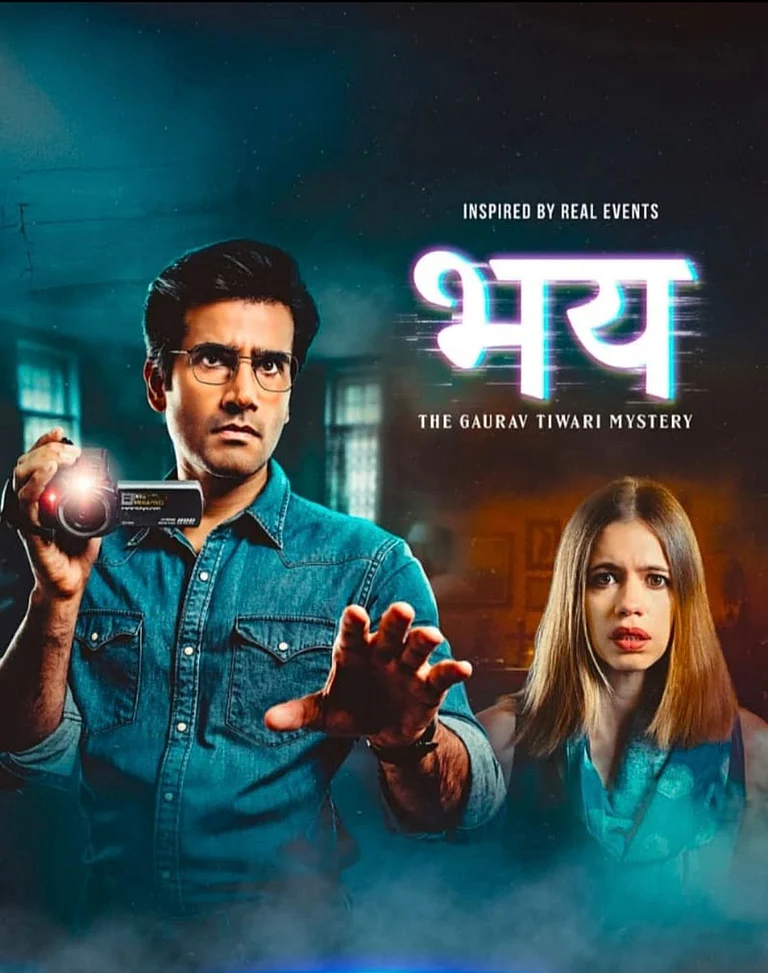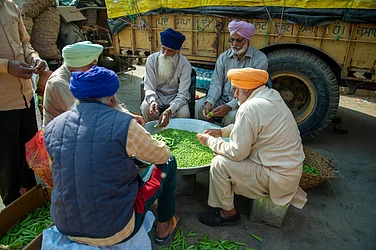A small box. Nine booklets. Each representing a museum. No stagnant, immobile architecture. It walks. Speaks to the people. Creates new imaginations.
As artist Dayanita Singh, who identifies herself as ‘mother of museums,’ wearing her museum jacket, climbs down the stage and walks towards the audience showing them her mobile museums, a new discourse is birthed—a novel interaction begins.
What is a museum? Is it all about a structure that archives history? Or, can it be reimagined as a mobile and dynamic form that forges a connection with lived memories and bodies? Can the museum space be democratised?
Nuanced discussions on these aspects shaped the discursive context of the panel discussions organised by Outlook in collaboration with Bihar Museum in the run-up to the second edition of the Bihar Museum Biennale. Divided into two thematic panel discussions—one on ‘Collective and Individual Memory’ and the other on ‘The Ways of Representation and Democratisation of Museums’—and featuring a performance by Bihari folk singer Chandan Tiwari, the programme held at Bikaner house on June 24 witnessed a sizeable outpouring of people from the arts and academia.

While the panellists focused on the democratisation of art and its possibilities, the temporary museum titled ‘Lost and Founds’, curated and conceptualised by Chinki Sinha, editor of Outlook magazine, reimagined the idea of everyday objects. Showcasing an array of objects ranging from Chhat dolls to Bihari marriage headgear like mauri and shehra, Sinha added a new meaning to object functionality. As the
objects are shifted from their usual sites, not only are the temporal and spatial meanings changed; a new intimate connection is built across the interface of subject-object interactions.
How could such a process contribute to democratising art? Dayanita Singh, whose Museum Bhawan comprises nine museums—a collection of her photographic works since 1981, says, “I once thought museums create collective memory but in reality, they just become storage. Collective memory is created not in museums but in homes or in one’s own village or bedroom.” When home becomes a museum of lived beings with the memories embossed onto every object, it talks to the everyday realities instead of an archived past.
Talking about the significance of the democratisation of the museum space, Director General of Bihar Museum, Anjani Kumar Singh says, “Museums can’t be an exclusive space. It has to be inviting. The communities should be engaging with it.” This sentiment was echoed by Indranil Roy, CEO of Outlook Group, who maintained that “inclusion was at the heart of Bihar Museum.”
In a unique effort to make the museum space more accessible to people, Bihar Museum has set up a section where the audience can touch the objects on display. These efforts were directed to demystify museum spaces that are mostly considered exclusive. “We are giving funds to at least 25 schools to bring their students to the museum. Only through the collaboration with the people will they be able to take the museum to their home.” The mobility of museums and its significance in the coming days were echoed in the words of Singh as well. “The museum of the future is small and portable: a suitcase museum on wheels,” she says.
While the first panel emphasised the democratisation of museums, the second panel attended by academic Ajay Gudavarthy, Y S Alone alongside curators Avni Sethi and Gustav Imam, deconstructed the idea of museums and their connection to the multidimensional everyday realities.
Living at a time when the resolution of conflicts seems to be the biggest social and political challenge, Sethi talks about the space of interaction between memory, body and cultural violence. “We are a complex society and we don’t have the space to talk about such a complicated society. Ahmedabad, for instance, has seen excruciating violence that has shaped the city and its architecture, its culture and relationships therein. The people there have either been perpetrators, victims or witnesses. If you are any of these, your life can be changed. Conflict Museum came out of it,” says Sethi.
Sethi conceptualised and designed Conflictorium—Museum of Conflict in violence-torn Ahmedabad in 2013. It gradually became a space of critical exploration where the conflict and its representational memories through art took centre-stage. Referring to the ways meta-narratives are built and voices of resistance are subdued, Sethi believed that there are two ways to change the narratives—“either through text books or museums.”
Political scientist Ajay Gudavarthy, however, was not on the same page as Sethi. “In India, violence is not an aberration. Those things that exist in society cannot be ‘museumised.’ There is a question of ethics,” he says. Emphasising on the colonial roots of museums, the author of Politics, Ethics and Emotions in New India asks, “What space would museums create for healing by forgetting our colonial past?”
The question of representation was also addressed by art historian Y S Alone. Talking about the transcendental nature of art that rarely represented the realities of people, he says, “In artistic things, we do have transcendental meaning without addressing the people who need to have some connections.”
“Where is the representation? Why can’t we have a museum of consciousness? China has a museum of poets. Can’t we have one? Marathi literature is full of Dalit poetry that challenges the Brahminical narratives. Why can’t we have these kinds of museums?” asks the historian.
Such a much-needed museum is Sanskriti Museum of Hazaribagh, Jharkhand, whose collections curator, Gustav Imam, chimed in with the history of the museum. His father Bulu Imam, in 1991, founded it after discovering rock art from the paleolithic and neolithic age. This is the only non-governmental museum in an archaeological site.
Imam speaks about the living character of Sanskriti Museum. It is not fixed in time. Rather, the expansions of its collections talk for its contemporary relevance. The ethnological gallery for Birhor, Santhal and Oraon communities composed of their life tales, monographs, culture and art represent the indigenous essence of Jharkhand. With more than 200 Sohrai and Khovar arts, Imam’s museum is a curation that works beyond temporality, bringing in the past and the present to craft a comprehensive future.
Amidst extensive discussions on democratising museums, the audience got the flavours of Bidesiya (‘foreign’) tunes along with the taste of Bihari cuisine. How can a culture thrive without the assertion of its everyday realities? The Delhi session of the Bihar Museum Biennale became the space of such a cultural interaction where heritage is not an artefact of the past: it lives with us, shaping our everyday. In that ephemeral space, many museums came together. Some were birthed and one was disseminated and yet another was born.
(This appeared in the print as 'Democratising Museums')



























